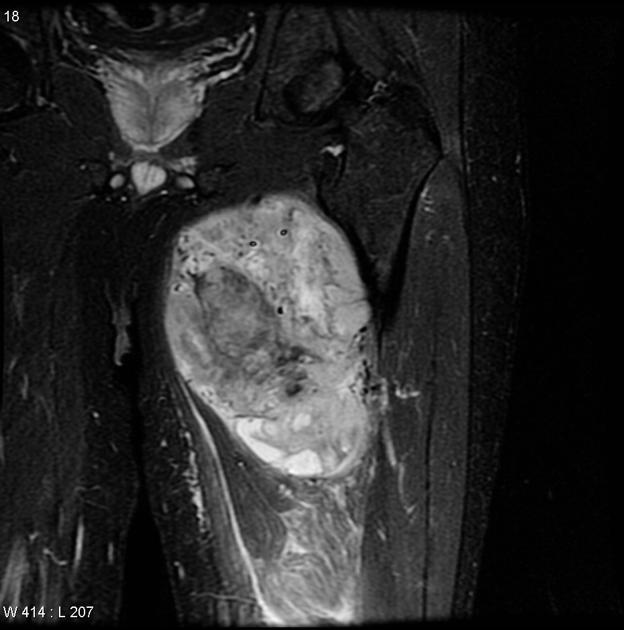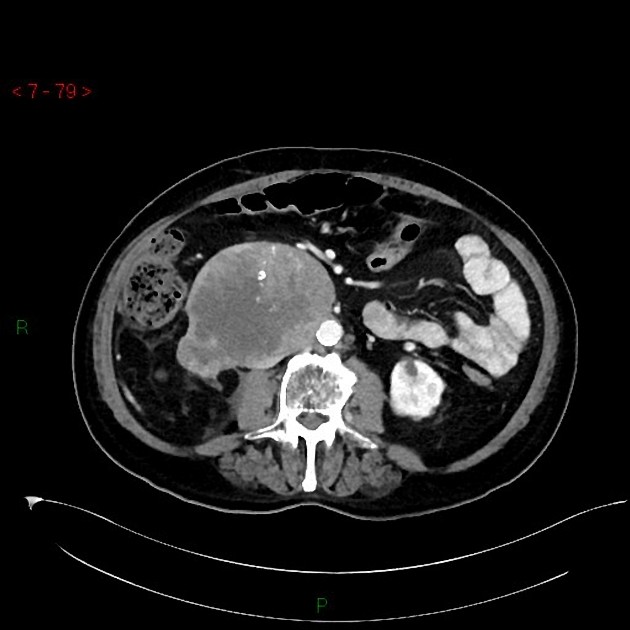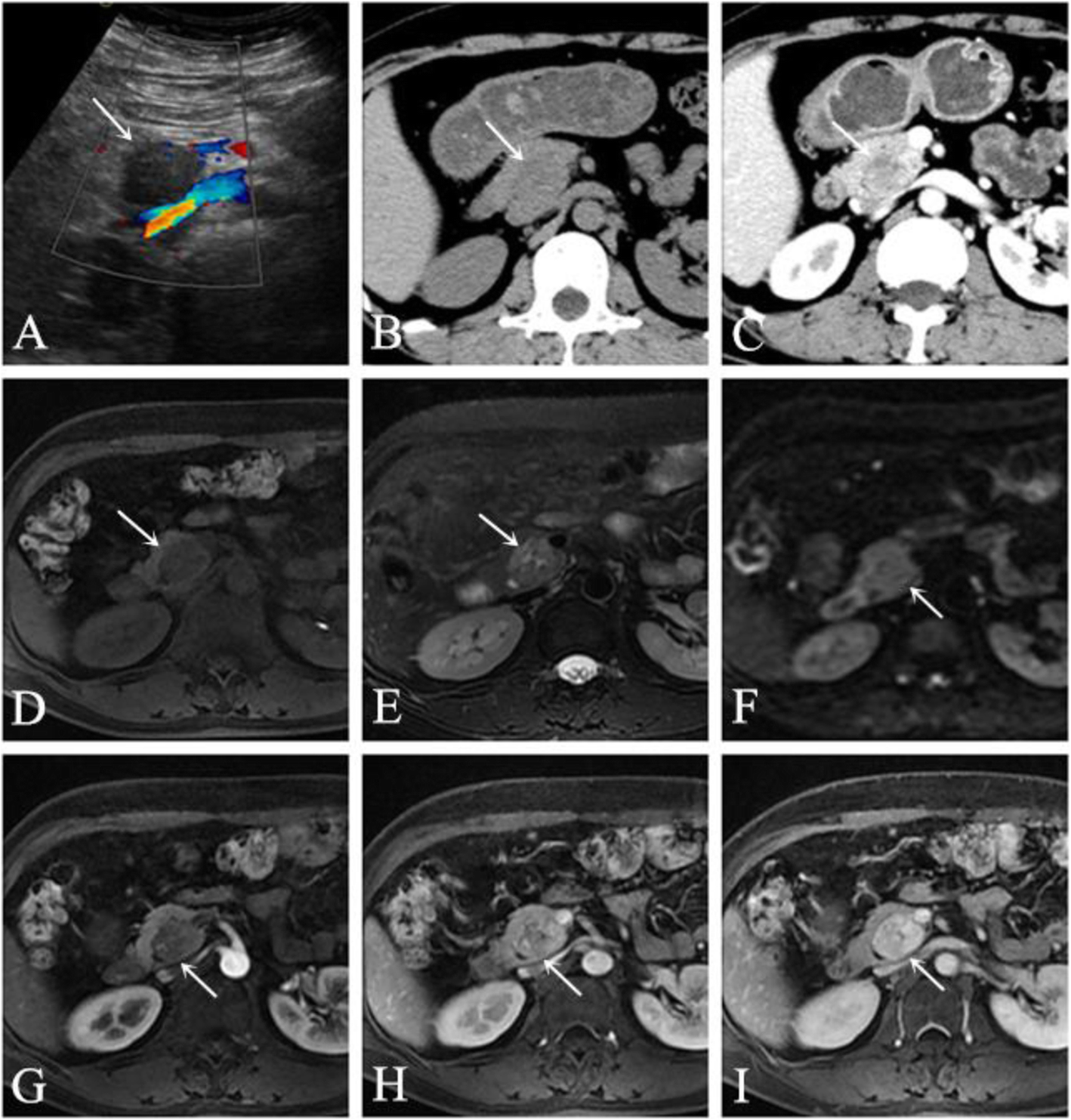primary retroperitoneal neoplasms

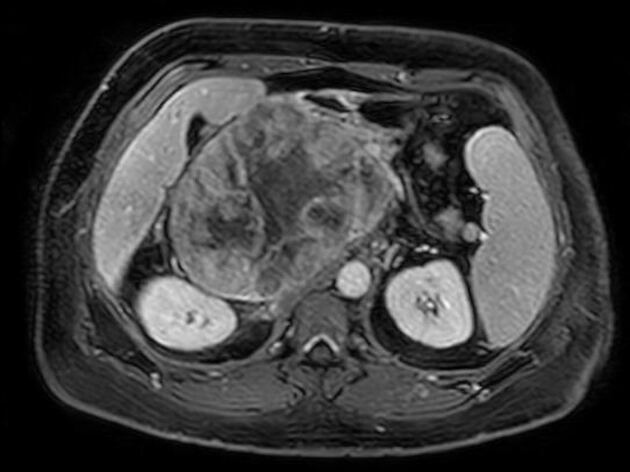

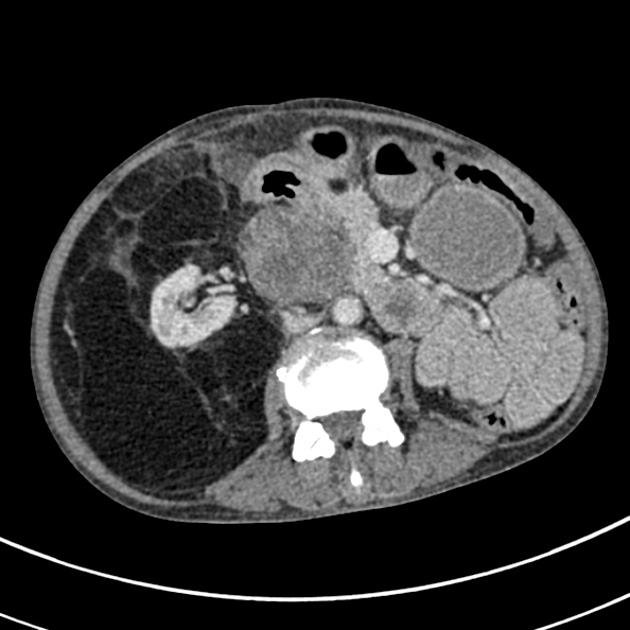

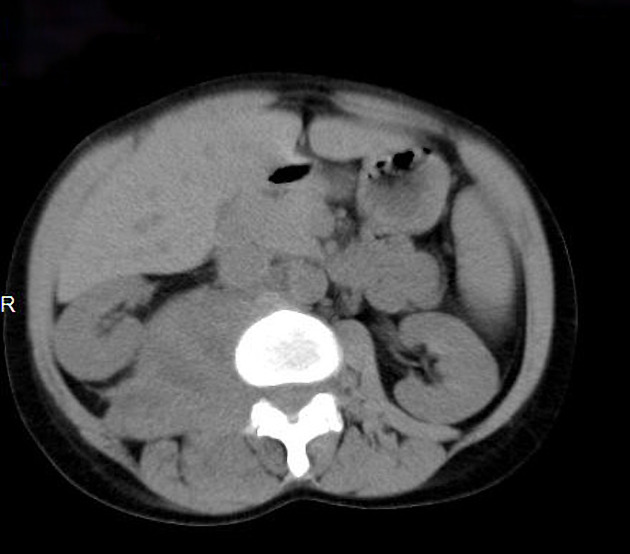
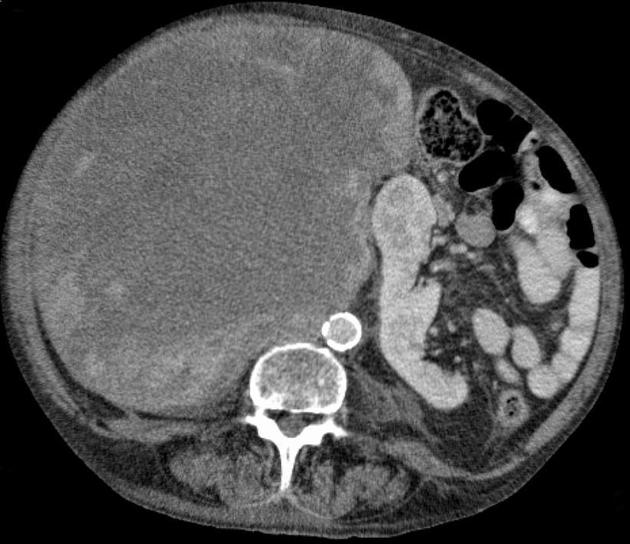







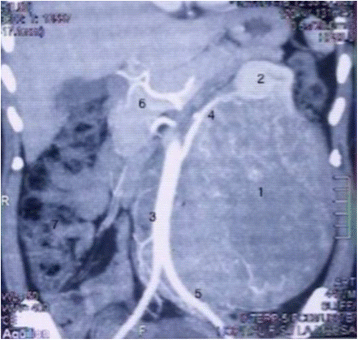
Primary retroperitoneal neoplasms are an extremely rare group of tumors (lymphoma is not included in this definition). The most common type is soft tissue sarcoma (90%).
Epidemiology
The most common age for presentation is 40-50 years.
Clinical presentation
Frequently tumors have relatively unimpeded growth where symptoms develop late and the tumor at presentation tending to be extremely large (average size 11-20 cm).
Pathology
Primary retroperitoneal neoplasms arise from outside the major organs, and are divided according to histological types:
- mesenchymal origin: skeletal muscle, fat, peripheral nerve, vessels, fibrous tissue
- extragonadal germ cell tumors
- primary retroperitoneal adenocarcinoma
Etiology
The order of frequency of primary retroperitoneal malignancy is as follows:
- liposarcoma
- undifferentiated pleomorphic sarcoma
- leiomyosarcoma
- rhabdomyosarcoma
- fibrosarcoma
- malignant peripheral nerve sheath tumor
- hemangiopericytoma
- extragonadal germ cell tumor
- primary retroperitoneal adenocarcinoma
Causes include radiotherapy, e.g. neuroblastoma treatment as a child.
Radiographic features
Imaging is used to confirm the diagnosis, assess for any metastatic disease and determine the potential for resection. CT is the most commonly used tool. MRI can be used for further differentiation, but histology is always required.
Percutaneous biopsy may be undertaken (after consultation with surgeons and oncologists), and for assessment of tumor grade, PET may be used .
Treatment and prognosis
Prognosis depends on the histological type of a tumor and the potential for resection.
Recurrence rates are high (90% in some series), so imaging surveillance is an important part of continued follow-up.
See also
Siehe auch:
- Pleomorphes Undifferenziertes Sarkom
- maligner peripherer Nervenscheidentumor (MPNST)
- retroperitoneales Liposarkom
- retroperitoneales Leiomyosarkom
- retroperitoneale zystische Veränderungen
- primäre peritoneale Neoplasien
- spontane retroperitoneale Einblutung
- retroperitoneales Lymphom
- retroperitoneale Sarkome
- retroperitoneal haemangiopericytoma
- mesenchymal
- pleomorphes undifferenziertes Sarkom des Retroperitoneums
- retroperitoneal synovial sarcoma
- retroperitoneales Rhabdomyosarkom
- retroperitoneales Hamartom
- solitärer fibröser Tumor des Retroperitoneums
- extraskelettales Osteosarkom des Retroperitoneums
- retroperitoneale Metastasen
- retroperitoneales Leiomyom
- retroperitoneales Myolipom
- retroperitoneales Ganglioneurom
und weiter:

 Assoziationen und Differentialdiagnosen zu retroperitoneale Tumoren:
Assoziationen und Differentialdiagnosen zu retroperitoneale Tumoren:


